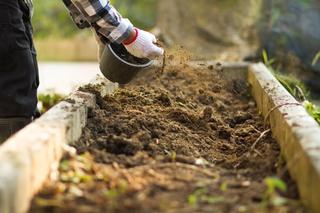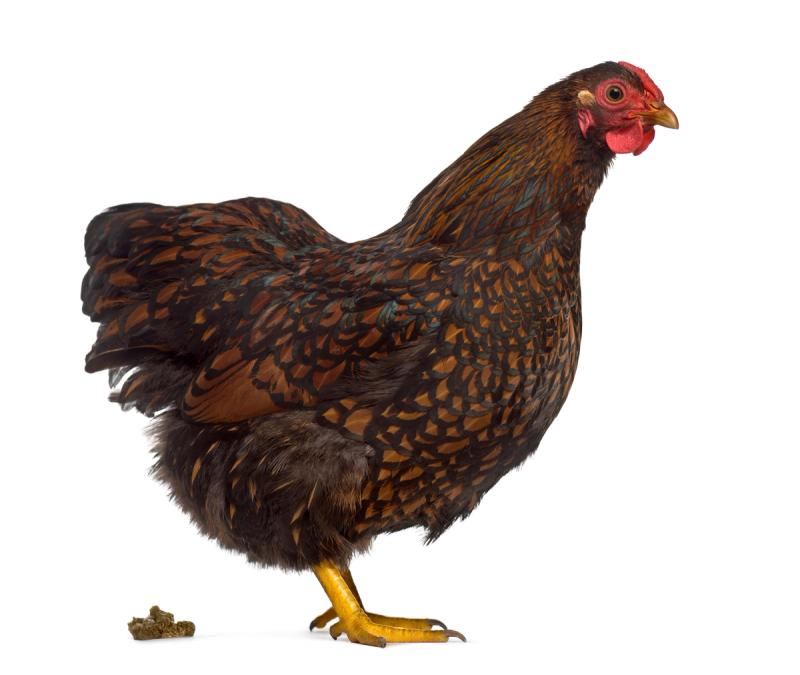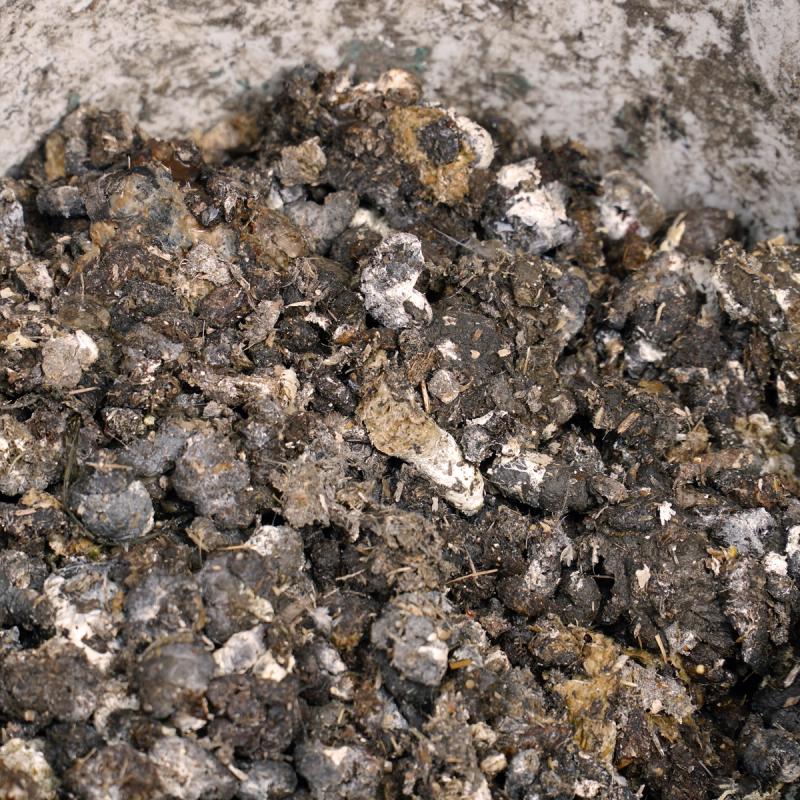What to do with All that poo?
Composting puts it to work for you


NOTE: Never put chicken manure, or even chicken manure mixed with bedding, onto your plants since:
Manure has not been transformed to compost and hence still has literally billions of potentially harmful or pathogenic bacteria.
The high nitrogen content in the manure can damage your plants.

Composting is an opportunity to give back to your garden, the environment, and your pocketbook. By turning all that chicken poop from your flock into “black gold” you can easily make a valuable soil amendment.
Composting, if done properly, inactivates most pathogens such as bacteria, but the operative word is “most.”
Harmful bacteria can still persist in smaller amounts, so washing your hands in addition to washing any plants that you eventually consume is critical. This is especially true for “touch plants”—plants that touch the ground while growing or harvesting such as lettuce, berries, and even apples that have fallen off the tree.
While these food safety concerns are real, it might be comforting to know that composting is almost as old as agriculture. When humans transitioned from hunter-gatherers to farmers over 5,000 years ago, new technologies became necessary. As humans domesticated animals like cattle and chickens, the concept of composting of animal dung and leaving fields fallow was likely discovered based on observations related to increased plant production and possibly reduced food-borne disease.
So, if you are keen to turn your chickens’ poop into some “black gold” (compost), read on for some basic tips.

What to use
All you really need is chicken poop (nitrogen), plant material (carbon), oxygen, and water. You can use discarded fruits, vegetables and even grass clippings and wood chips. However, the proportions of the ingredients is important.
Too much or too little of these ingredients may produce bad smells or inhibit the beneficial bacteria from growing and transforming the material to compost.
The proper mixture
The ratio of your ingredients is key to success. You typically want a carbon-to-nitrogen ratio of approximately 30:1 on a weight basis.
In other words, for every 2 pounds of plant material you would want about 1 ounce of chicken poop.
This ratio, plus some water, will allow the correct bacteria to grow which are essential for transforming the un-composted material to composted material.
As the good bacteria grow and displace the bad bacteria, heat is generated. This heat is key to helping the good bacteria grow and inactivating harmful viruses and bacteria. Getting to a temperature between roughly 141°F. to 155°F. is very important because this is the temperature where pathogenic bacteria die and weed seeds are inactivated.
Let the cooking begin
Reaching the temperature listed above can be challenging in certain colder and wetter climates, and can also be challenging if you compost pile is too small—a common issue for backyard chicken owners.
With respect to the weather, if you live in a cold and wet environment you may want to consider composting when the temperature is warmer.
In addition, while water is one of the key ingredients because you don’t want too much. You basically just want the material to be somewhat moist.
Do I need a bin?
Make sure you have a dedicated, raised, secure container for composting (or see below for an alternative method called sheet or lasagna composting). Rodents, insects and birds will likely try to get into your black gold and eat some of the un-composted ingredients.
Unfortunately, they often poop where they eat which can be a serious food safety issue if you take your compost and then spread it in your garden.
One advantage of the raised system is that the pile can be turned easily, especially if there is a crank to turn the compost container. The goal here is to introduce oxygen, which helps the good bacteria grow.
You can also try “sheet or lasagna composting” where you place the mixed material on cardboard or wet newspaper and then put a layer of carbon (plant material, remember?) on top
How do you know your compost is done?
This is both objective and subjective…
Objective evaluation: The internal temperature of your compost pile should reach a temperature of between 141°F. to 155°F. You can get a special thermometer for compost which is basically a metal probe with a thermometer at one end.
This way you just need to poke the pile and measure the internal temperature as opposed to breaking open the pile and measuring the temperature.
Subjective evaluation: Compost should feel and smell like rich soil and not like poop. The transformation should be obvious, but there is no specific objective feel or smell. Like everything, this comes from experience. When in doubt, however, you can compare to store-bought compost.
Bringing two together
Even though it can be a little tricky for backyard producers, composting can be a very satisfying activity to fully integrate your chickens and plants in a way that humans have done for thousands of years.
Ultimately, you just need to figure out what works best for your system and with a little “egg-sperimentation,” you can come up with an approach that works best for your specific situation.
About the author
Maurice Pitesky is a faculty member at University of California Cooperative Extension (UCCE) with an appointment in poultry health and food safety epidemiology. Pitesky earned his BS in biology from UCLA and his DVM and MPVM from UC Davis. Pitesky is also boarded in preventative veterinary medicine (DACVPM).
Published: August 24, 2023
Tags:Pitesky's Poultry

Chicken Whisperer is part of the Catalyst Communications Network publication family.











